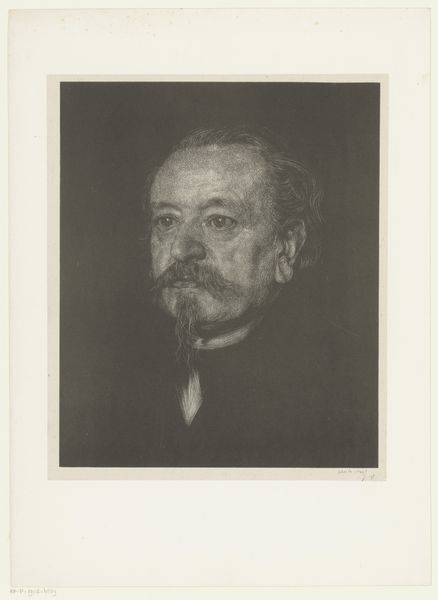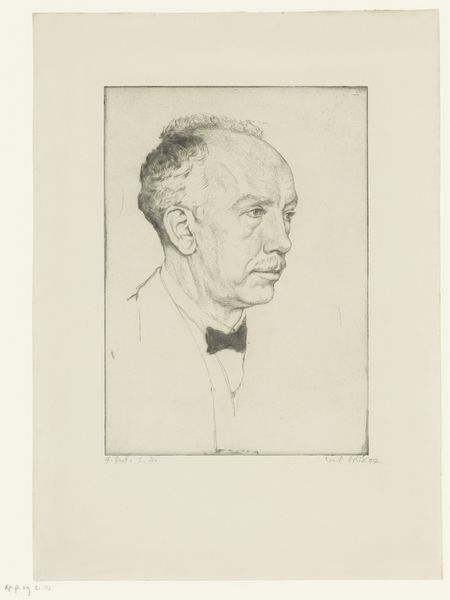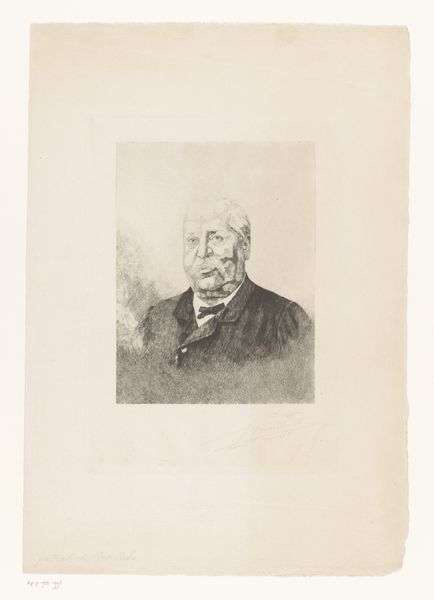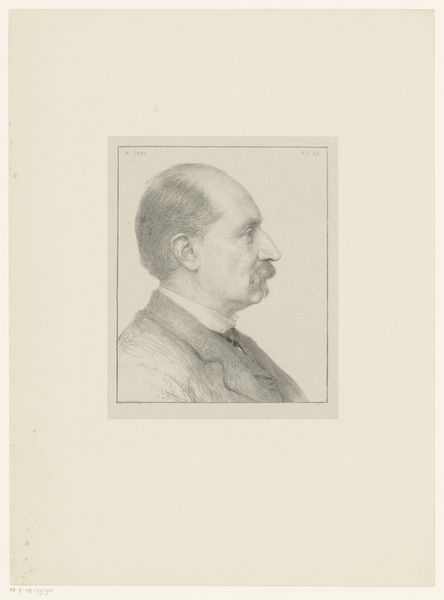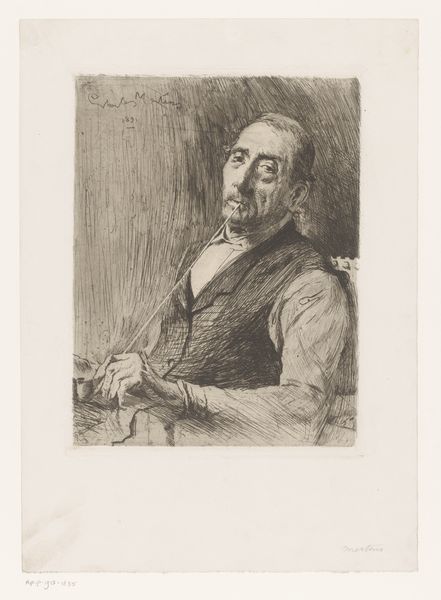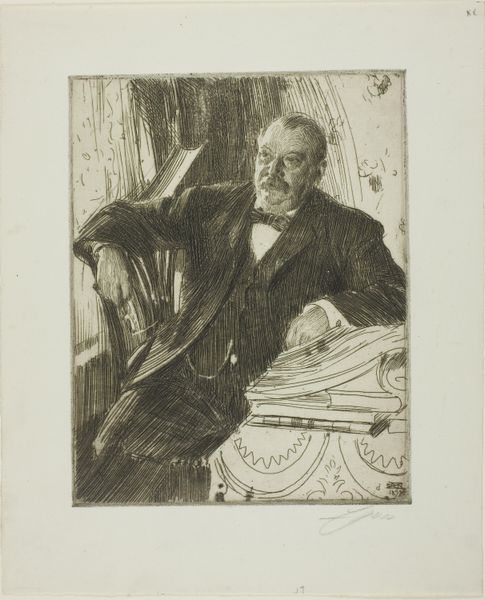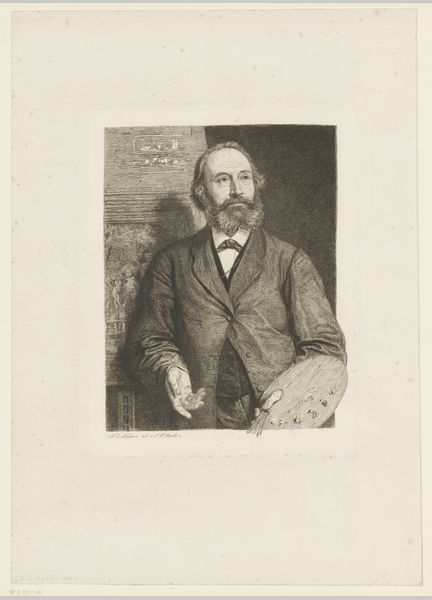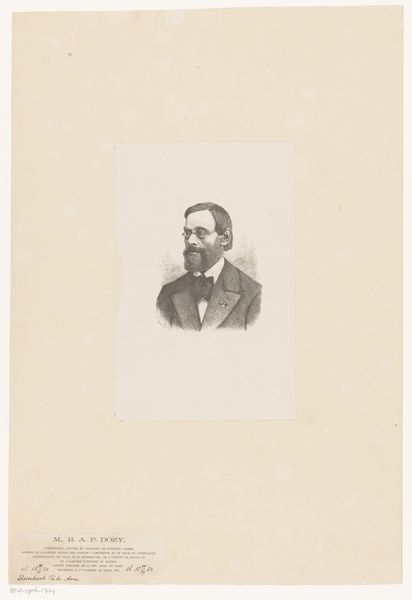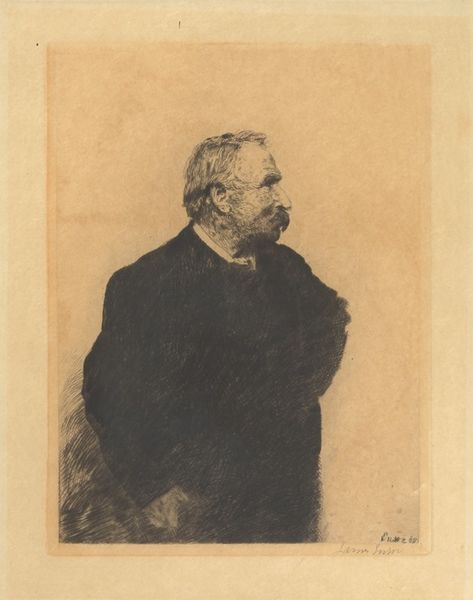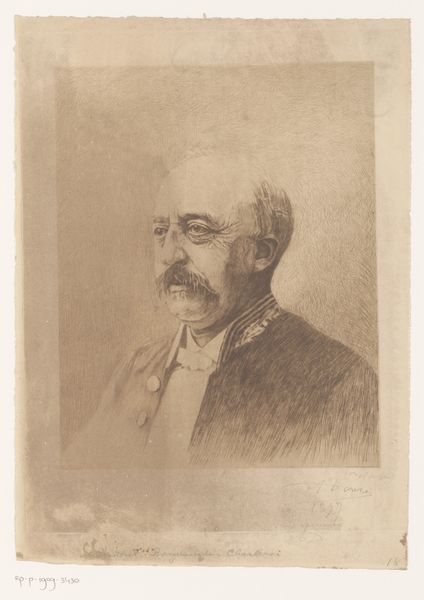
drawing, graphite
#
portrait
#
drawing
#
graphite
#
modernism
#
realism
Dimensions: height 423 mm, width 297 mm
Copyright: Rijks Museum: Open Domain
Curator: Ferdinand Hart Nibbrig created this piece, a graphite drawing titled "Portret van een onbekende man," sometime between 1876 and 1915. Editor: Immediately striking is the almost mournful quality—that gaze directed slightly downwards. It exudes a somber air, as if the sitter carries some weighty thoughts. Curator: Yes, and it begs the question: who was this man, and how did Nibbrig perceive him? His slightly formal attire - a suit and bow tie - suggests a certain social standing, but there’s also a hint of melancholy in his eyes, isn't there? This was a time of huge social and political upheaval; who did traditional society imagine the "new man" to be? Editor: Precisely! What narrative is absent? Are we really seeing just an 'unknown man' or does the museum-as-institution participate in perpetuating his anonymity as perhaps an act of erasure, silencing voices deemed "other" during this period? Was Nibbrig consciously making statements through his compositions? Curator: Nibbrig himself was part of the modernist movement, influenced by realism. Considering that lens, the details—the precision of the line work on the face, the suggestion of a bookcase in the background—they almost seem to capture the very essence of an individual within his environment, but within a wider, Westernized canon. It’s as if the man is embedded in that very historical period, looking back. Editor: But that bookcase looms over the man, a suggestion of being weighed down, burdened by knowledge perhaps, or by expectation of the educated middle-classes during an era of changing identity. How can the very formal conventions—such as the portrait style—be a tool for enforcing political ideology about masculinity? Curator: These drawings help us to examine the dynamics of portraiture within this transitional era of Modernism, and to critically consider which perspectives get silenced in museum environments. Editor: Indeed, this provokes considerations around how the artistic expression intertwines with broader narratives of power and visibility, and those rendered 'invisible.'
Comments
No comments
Be the first to comment and join the conversation on the ultimate creative platform.
